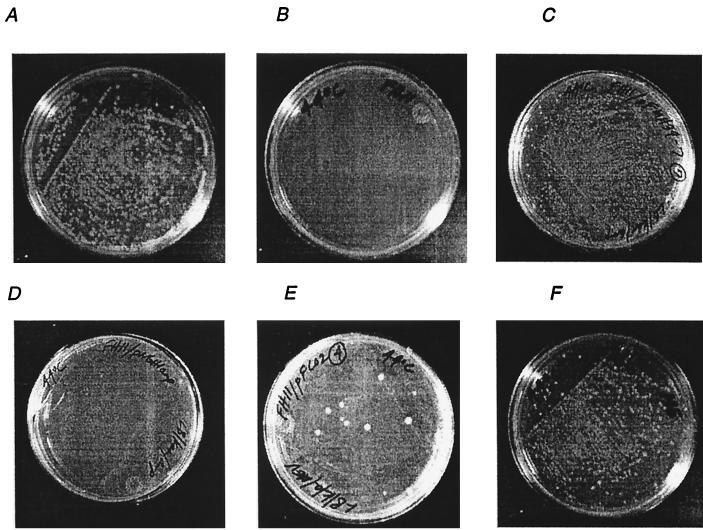FIG. 3.
Growth of E. coli FH11 at 30 and 44°C. FH11 cells with chromosomal dxs::Kanr and episomal dxs under the control of the temperature-sensitive origin of replication contained in pMAK705 (14) were grown under the following conditions. (A) FH11 cells were able to grow at 30°C on LB-kanamycin medium. (B) FH11 cells were unable to grow at the nonpermissive temperature of 44°C on LB-kanamycin medium, establishing that E. coli dxs is an essential gene. (C) FH11 cells with R. capsulatus ORF 2895 contained in pFMH39 were able to grow at the nonpermissive temperature of 44°C on LB-kanamycin/ampicillin medium, establishing that R. capsulatus ORF 2895 carries dxsB. (D) FH11/pNGH1-Amp cells containing the parent vector of pFMH39 and pFCO2 were unable to grow at 44°C on LB-kanamycin/ampicillin medium. (E) FH11/pFCO2 cells were able to grow at 44°C on LB-kanamycin/ampicillin medium supplemented with 50 mg of mevalonic acid per ml, establishing the ability of the synthetic operon contained within pFCO2 to synthesize IPP. (F) FH11 cells were able to grow at the nonpermissive temperature of 44°C on LB-kanamycin medium containing ∼0.3 mg of ME per ml.

